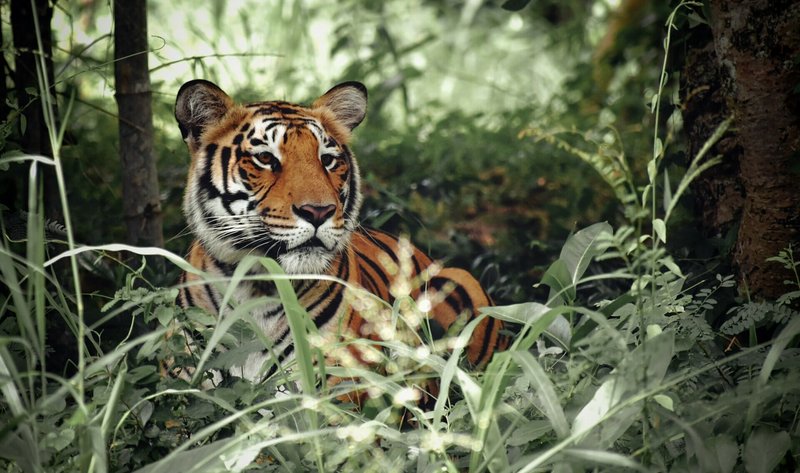
So, why should we care? The Malayan tiger plays a crucial role in its ecosystem, acting as a top predator. Without such creatures, the balance in nature can tip, leading to unforeseen consequences. Just like how losing a single thread can unravel an entire fabric, losing the Malayan tiger could disrupt the entire ecosystem in which it lives. This article will dive deep into the current status of the Malayan tiger, the reasons behind its endangered status, and what’s being done globally to protect this magnificent creature.
What Makes the Malayan Tiger Unique?
The Malayan tiger, scientifically known as *Panthera tigris jacksoni*, is distinct from other tiger subspecies. With its smaller size and unique striping patterns, it plays a vital role in the Malaysian rainforest. Picture a bold artist splashing vibrant colors onto a canvas; that’s the Malayan tiger with its striking fur, adapted beautifully to its lush habitat.
You might be wondering what sets it apart from the Bengal or Siberian tiger. For starters, the Malayan tiger is smaller, with males averaging around 120 to 140 pounds. Additionally, their coat is darker, and the stripes are closer together, making them perfectly camouflaged in dense foliage. This adaptation allows them to be stealthy hunters, essential for their survival in the jungles of Malaysia.
Unfortunately, these unique features don’t shield them from the threats they face. If we don’t act now, we risk losing a subspecies that contributes significantly to biodiversity. Imagine a rainbow losing one of its colors; the Malayan tiger is one of those colors in the tapestry of life.
Why is the Malayan Tiger Endangered?
The Malayan tiger is classified as endangered on the IUCN Red List, and for good reason. The main threats come from habitat loss, poaching, and diminishing prey. Let’s break these down one by one.
First, habitat loss is a significant issue. As forests are cleared for agriculture and development, the tiger’s natural home shrinks. It’s like if we started tearing down all the buildings in a city—eventually, there wouldn’t be a city at all. Deforestation not only reduces the area where Malayan tigers can roam and hunt but also fragments their territories. This fragmentation leads to isolated populations that struggle to find mates, which is critical for maintaining genetic diversity.
Next up is poaching. These majestic tigers are hunted for their beautiful pelts and body parts, which are often sold on the black market. This isn’t just a tragedy for the individual animals; it disrupts the entire ecosystem. With fewer tigers, there’s an overpopulation of prey animals, which can lead to overgrazing and a decline in plant life. Imagine if a predator were removed from the food chain—chaos could ensue!
Lastly, the decline in prey species often correlates with habitat destruction. The Malayan tiger relies on a healthy population of deer, wild boar, and other animals. When these prey species dwindle, tigers face starvation, leading to increased human-tiger conflict as they venture into populated areas seeking food.
The Role of Global Conservation Efforts
Conservation efforts to save the Malayan tiger are underway, but they require global attention and support. Organizations like the World Wildlife Fund (WWF) are leading the charge, teaming up with local governments to create sustainable solutions. It’s not just about saving a species; it’s about preserving an entire ecosystem.
One crucial strategy involves establishing protected areas. These conservation sanctuaries act like safe havens, allowing tigers to roam free without the threat of poaching or habitat loss. Think of these protected areas as nature’s version of a secure home—essential for survival. The Malaysian government has also developed a national plan to preserve tiger habitats, focusing on sustainable land-use practices.
Besides habitat protection, community involvement is key. Local communities are often the frontline defenders of these endangered tigers. By educating people about the importance of tigers and the benefits of biodiversity, we can shift perspectives. Imagine growing up in a neighborhood where everyone understands the value of wildlife; that’s the goal of these education programs.
Success Stories and Hope for the Future
While the situation for the Malayan tiger is dire, there is a glimmer of hope. Conservation initiatives have seen some positive outcomes. For instance, camera traps in protected areas have reported sightings of Malayan tigers, indicating that populations are slowly stabilizing. These sightings are thrilling, almost like finding a rare Pokémon in the wild!
Another success story comes from anti-poaching efforts. In regions where dedicated patrols and community engagement have increased, poaching rates have dropped significantly. This shows that when resources are allocated effectively, real change is possible. Just like how a team working together can achieve great things, conservation organizations, local governments, and communities can create a united front against poaching and habitat loss.
Moreover, international collaboration plays a vital role. Countries are beginning to realize that wildlife doesn’t recognize borders. Treaties and agreements focusing on wildlife protection and transboundary conservation areas allow for a more cohesive approach to saving the Malayan tiger. It’s the idea that by coming together, we can create a larger zone of safety for these animals.
How Can You Help Save the Malayan Tiger?
You might be wondering, “What can I do to help?” The good news is that every little bit counts. Here are some simple ways you can contribute to saving the Malayan tiger:
- Support conservation organizations: Donating to groups like the WWF or local conservation projects can directly help protect their habitat.
- Spread the word: Educating friends and family about the plight of the Malayan tiger can raise awareness and inspire others to take action.
- Practice sustainable choices: Choosing products that are eco-friendly and sustainably sourced helps reduce habitat destruction.
- Participate in conservation events: Join local conservation efforts or fundraising events in your area to directly engage with the cause.
Each of these actions may seem small, but collectively, they can have a significant impact. Just as a single raindrop can lead to a larger storm, your involvement can contribute to a wave of change.
The Malayan tiger’s fight for survival is a crucial part of a larger story about biodiversity and ecosystem health. With its habitat under siege and poaching on the rise, it’s easy to feel overwhelmed. However, there’s hope through conservation effort, education, and community involvement.
By taking small steps and supporting global initiatives, we can be part of the solution. Just as every flower in a garden contributes to its beauty, every effort to save the Malayan tiger adds to the global fight for conservation. Together, we can help ensure that future generations will marvel at the sight of this magnificent creature in the wild, thriving in its natural habitat. Let’s keep the conversation going and the action flowing—because the Malayan tiger deserves a fighting chance.

